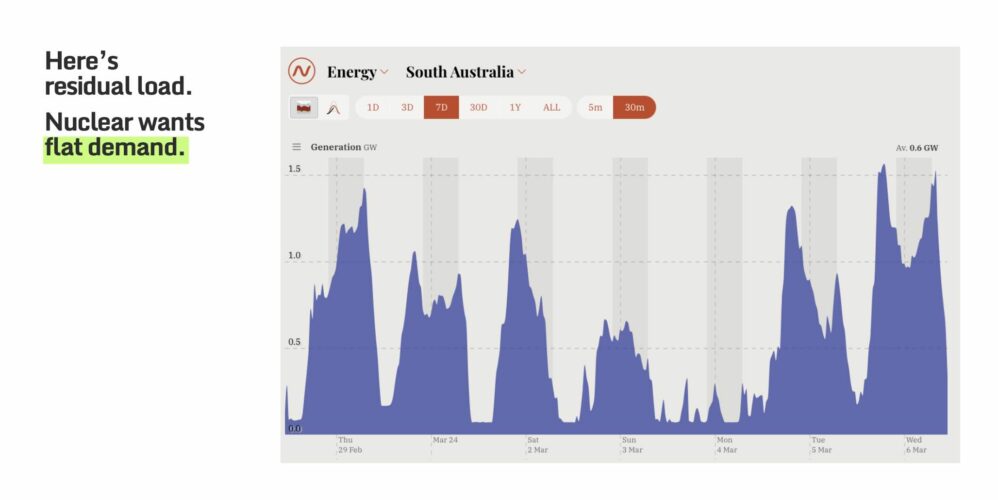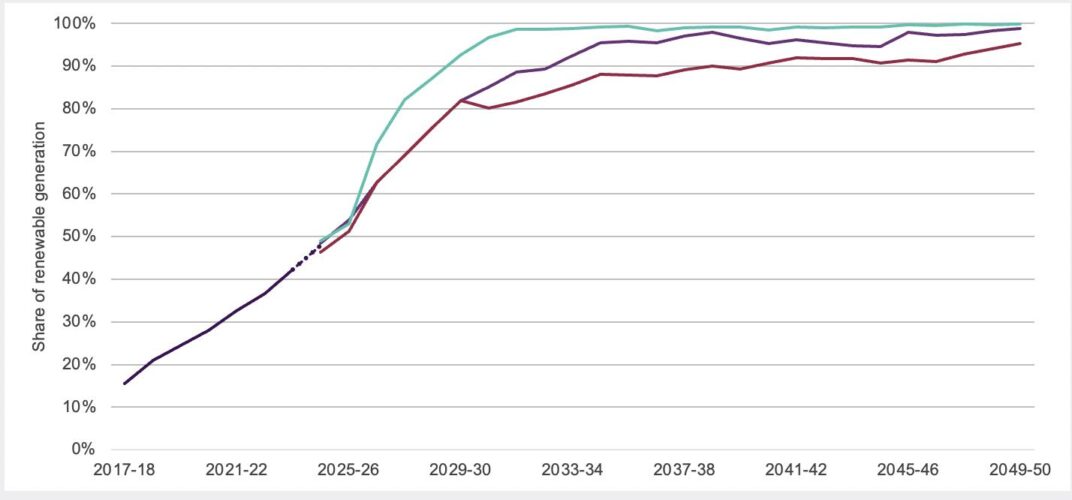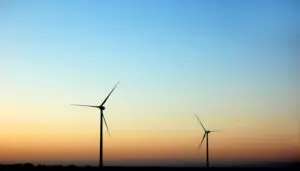One of the big unanswered questions about the federal Coalition’s push for large-scale nuclear energy is how and where it would fit onto the grid and into the Australian electricity market.
Every informed participant in Australia’s energy transition – from the market operator, to regulators, policy makers, utilities and the energy market itself – understands that the grid is moving from the old “baseload” paradigm to a new system based around wind and solar, and firmed up by dispatchable energy.
The more informed baseload operators have seen this coming for more than a decade. They bleated about the emergence of rooftop solar when the first generous feed-in tariffs sparked a rapid growth in deployment, even though at that time it was merely nibbling at the edges of their daytime market lunch-packs.
That has now completely changed. The grid is moving on from “baseload”, says the country’s biggest utility, and rooftop solar has already grown to more than 20 gigawatts, sending grid demand levels down to zero in the middle of the day in states such as South Australia.
Rooftop solar is not finished yet. It is forecast to grow nearly four-fold over the coming two decades to more than 70 GW – for the simple reason that, for consumers, it is the cheapest source of energy and will help power their electric homes as they shove gas appliances out the door and also buy electric cars.

What that means is that the demand profile of the Australian electricity grid will start to look like South Australia’s, where rooftop solar is effectively eating away demand during the day.
The graph above, taken from a presentation made to the Smart Energy Council conference earlier this month by Simon Holmes a Court, shows the hollowing out of daytime demand from rooftop solar. “It’s the complete opposite of what a new (nuclear) power station wants to do,” he told the conference.
And this is happening in the real world. In Spain, which has large amounts of solar, the solar duck curve has forced nuclear power units to switch off, raising more concerns about the sustainability and future of these assets.
In this grid reshaped by wind and solar, there is a lot of space for fast and flexible “firming” capacity, but not for technologies like nuclear, whose current economics – already out of the running because of the extraordinarily high costs of building them – depend on the plant being run at near full output, all the time.
Which means that if you are to jam nuclear power plants into a grid that will – by 2040 – be almost entirely renewable, space will have to be cleared. The obvious candidate is the curtailment of rooftop solar, or at least for more storage, far beyond what would be contemplated without nuclear or another “baseload” supply.
To be sure, there are widespread calls for households to be supported with more small batteries in any case to help soak up some of their growing rooftop solar output, but the scale of that need would soar in a nuclear scenario.
That means even more added costs, over and above the already high cost of “back-up” that large-scale nuclear already requires because of the size of the individual units.
Grid operators have to make redundancy plans for the potential loss of the biggest unit in the grid: If that unit, as the Coalition seems certain to propose, is large-scale nuclear sized at more than 1 GW (because small modular reactors do not yet exist), then these costs will be added to the grid.
And not withstanding system reliability issues, it’s widely recognised in the industry that nuclear – like any other electricity source – needs back-up to ensure there is flexibility to respond to sudden changes in demand and unexpected, and even scheduled, outages.
It’s why most of the world’s pumped hydro was built decades ago, to back up the big nuclear power plans of the time.
One option for nuclear to find space in the Australian grid post 2040 would be to help meet the massive increases in demand created by the widespread electrification of industry, the rapid uptake of electric vehicles and surging demand for green hydrogen.
The Australian Energy Market Operator canvasses such a demand scenario in its Integrated System Plan, dubbed Green Energy Exports, effectively replacing the bulk of fossil fuel exports that the Coalition seeks to protect.

As the graph shows, the required capacity of the main grid, the National Electricity Market, grows exponentially, and is double what the central scenario models.
For that to happen, however, would require an accelerated transition to net zero, driven by a fast-tracking of the rollout of renewables – neither of which the federal Coalition supports.
Indeed, as the graph below from the draft 2024 ISP illustrates, the transition to wind and solar is accelerated over the near term, and according to that ISP modelling, renewables reach close to 100 per cent share of the main grid within a decade, and stays there.

But the Coalition is actively campaigning against such a scenario, in all its forms.
It wants a moratorium on large-scale wind and solar, and the Coalition and conservative commentators have sought to demonise the very technologies that would make this possible, particularly at the consumer level – battery storage, electric cars, induction cooktops and demand management.
It should be noted that the most active proponents of nuclear in Australia have consistently urged a stop to wind and solar development, because nuclear advocates cannot get their mind around the “variability” of wind and solar, nor the need to cut emissions quickly.
Some insight into what is shaping the Coalition’s thinking comes from testimony to parliamentary committee in 2021 by James Fleay, a former oil and gas executive and founder of the advocacy group Down Under Nuclear Energy (Dune), who serves as an advisor to Coalition energy spokesman Ted O’Brien.
Fleay told a parliamentary committee looking into future energy choices last year that “baseload” architecture had served Australia well for a century and should not be changed. “We have to make a decision about grid architecture,” he said.
Fleay, like most nuclear advocates, simply cannot accept that wind and solar, backed by flexible and dispatchable capacity, can service a modern economy. So they need to stop it.
“We cannot adapt our energy usage to accommodate the rising and setting of the sun or seasonal weather uncertainties without enormous human and economic costs,” Fleay said, before adding later: “I think that is possible and true only at the margins, but not in bulk.”
Fleay, in separate interviews, often mentions Australia’s isolated grid as a reason not to go the wind and solar route because of the inability to export.
But that same isolation has an equal, or arguably greater impact on nuclear because of its dependence on high production rates, known as capacity factors. The French nuclear generators wouldn’t survive without the connection to other European grids.
And that is basically the whole problem with the Coalition nuclear campaign.
If it was suggested that nuclear could be brought in at some future post 2040 date – economics and technology permitting – to support the acceleration of the transition to a zero emissions economy, rather than seeking to slow it down, it might just gain some credibility. But that is clearly not the plan.









